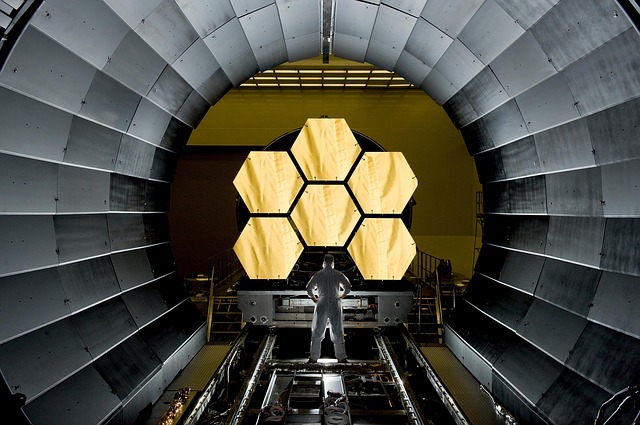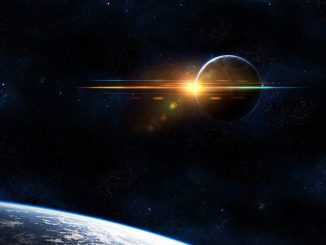
Black holes have always been a mystery. We believe they exist, but we’ve never really seen one. But what about those images that illustrate stories and articles about black holes? Believe it or not, those are just artist depictions and interpretations based on Einstein’s predictions of what black holes ‘probably’ look like.
The truth is, black holes are close to impossible to photograph because, well, they’re black and extremely dark. They’re so massive, powerful and all-consuming that anything that gets near it gets trapped forever. As the typical description of a black hole says — nothing, not even light can escape once it passes the black hole’s event horizon (also known as the ‘point of no return’).
While we may have thought that we won’t ever get the chance to know for certain what a black hole looks like, it seems things are about to change. Come April 5 to 14, a device aptly called the ‘Event Horizon Telescope‘ (EHT) is scheduled to be switched on. Scientists have been developing the virtual telescope for years, and now they’re finally ready to see if it works. And their first order of business is to bring into focus our own galaxy’s black hole called Sagittarius A*.
Based on observations, astronomers approximate Sagittarius A* to be as massive as about 4 million suns. Despite being that massive, however, it only measures around 44 million kilometers. And because it is located some 26,000 light-years away from the Earth, looking at Sagittarius A* will supposedly be like looking at something on the moon’s surface that’s the size of a CD or a grapefruit.
To be able to see Sagittarius A* at the best possible resolution, the EHT team will be using a technique referred to as very-long-baseline interferometry (VLBI). Through this, participating observatories around the world will be united as their radio telescopes will be turned into one giant powerful telescope that spans the entire planet. This involves equipping the observatories with atomic clocks to ensure precise time stamps, and hard drives with immense storage capacities that can accommodate the enormous amount of data that’s expected to come in. When the observation period is over, the hard drives will be sent to the MIT Haystack Observatory where processing of the data will be done.
Scientists have optimistic expectations about what the telescope will let them see. Based on Einstein’s equations, a black hole will be characterized by a bright crescent of light surrounding a dark blob. The light will be emanating from dust and gas particles that move at ultra-fast speeds just before they get torn apart and swallowed by the black hole. The dark blob will be the shadow cast by the ongoing mayhem.
If scientists see exactly that, then it will once again prove the genius of Einstein in terms of predicting something that exact. But if they see something else — like a bright ring of light instead of just a crescent — then the theory of gravity and relativity might be in for major re-evaluation.
Nobody’s really out to deliberately challenge Einstein. We just want to know what a black hole really looks like so we can understand the universe better.
As project leader Sheperd Doeleman of the Harvard-Smithsonian Centre for Astrophysics told BBC: “There’s great excitement… As I’ve said before, it’s never a good idea to bet against Einstein, but if we did see something that was very different from what we expect we would have to reassess the theory of gravity. I don’t expect that is going to happen, but anything could happen and that’s the beauty of it.”
- Bulenox: Get 45% to 91% OFF ... Use Discount Code: UNO
- Risk Our Money Not Yours | Get 50% to 90% OFF ... Use Discount Code: MMBVBKSM
Disclaimer: This page contains affiliate links. If you choose to make a purchase after clicking a link, we may receive a commission at no additional cost to you. Thank you for your support!




Leave a Reply